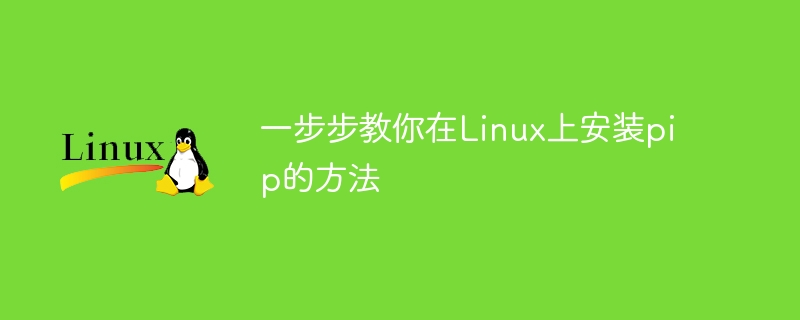

Teach you step by step how to install pip on Linux, specific code examples are required
Python is a very powerful programming language with a huge ecosystem and A large number of third-party libraries. Pip is Python's package management tool, which allows us to easily install, uninstall and manage these third-party libraries. This article will introduce in detail how to install pip on a Linux system and provide specific code examples.
There are many ways to install pip on Linux. The following will introduce you to the two commonly used methods step by step.
Method 1: Use the system package management tool to install pip
Most Linux distributions provide package management tools, and pip can be installed through the package management tool. This method is the simplest and fastest and suitable for most situations.
First, open the terminal, and then use the following command to check whether the system package management tool has been installed:
$ which apt-get # 适用于Debian、Ubuntu等基于Debian的发行版 $ which yum # 适用于CentOS、Fedora等基于RPM的发行版
If the command path is output, it means that the system has installed the corresponding package management tool.
Next, use the package management tool to install pip. Taking installing pip on Debian or Ubuntu as an example, execute the following command:
$ sudo apt-get update # 更新包列表 $ sudo apt-get install python-pip # 安装pip
This completes the installation of pip.
Method 2: Use get-pip.py to install pip
If the system does not provide a package management tool, or you want to get the latest version of pip, you can use get-pip.py to install it.
First, open the terminal, and then use the following command to download the get-pip.py script:
$ wget https://bootstrap.pypa.io/get-pip.py
Next, execute the following command to install pip:
$ sudo python get-pip.py
This is done pip installation.
After the installation is completed, you can use the following command to verify whether pip is installed successfully:
$ pip --version
If the version information of pip is output, it means that pip has been successfully installed.
Before using pip to install third-party libraries, it is recommended to update pip to the latest version. Execute the following command to update pip:
$ sudo pip install --upgrade pip
At this point, we have successfully installed pip on the Linux system.
In addition to installing pip, here are some commonly used pip commands:
pip install command to install the specified third-party library. For example, to install the Django library, execute pip install django. pip uninstall command to uninstall the specified third-party library. For example, to uninstall the Django library, execute pip uninstall django. pip list command to list the third-party libraries that have been installed in the current environment. pip search command to search for the specified library in PyPI (Python Package Index). For example, to find a library named requests, execute pip search requests. Summary:
This article details two common methods of installing pip on Linux systems and provides specific code examples. Through these methods, you can easily install and manage Python third-party libraries to facilitate your programming work. Hope this article is helpful to you!
The above is the detailed content of Step-by-step guide to install pip on Linux. For more information, please follow other related articles on the PHP Chinese website!




